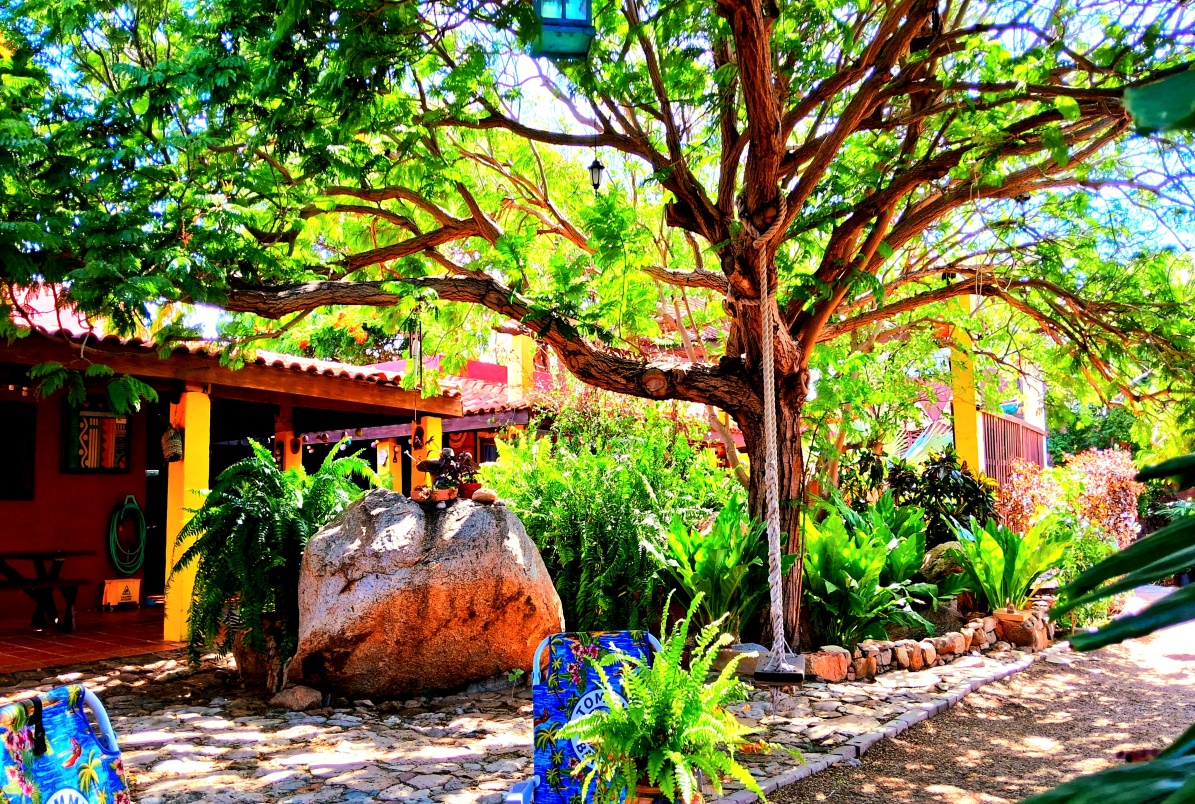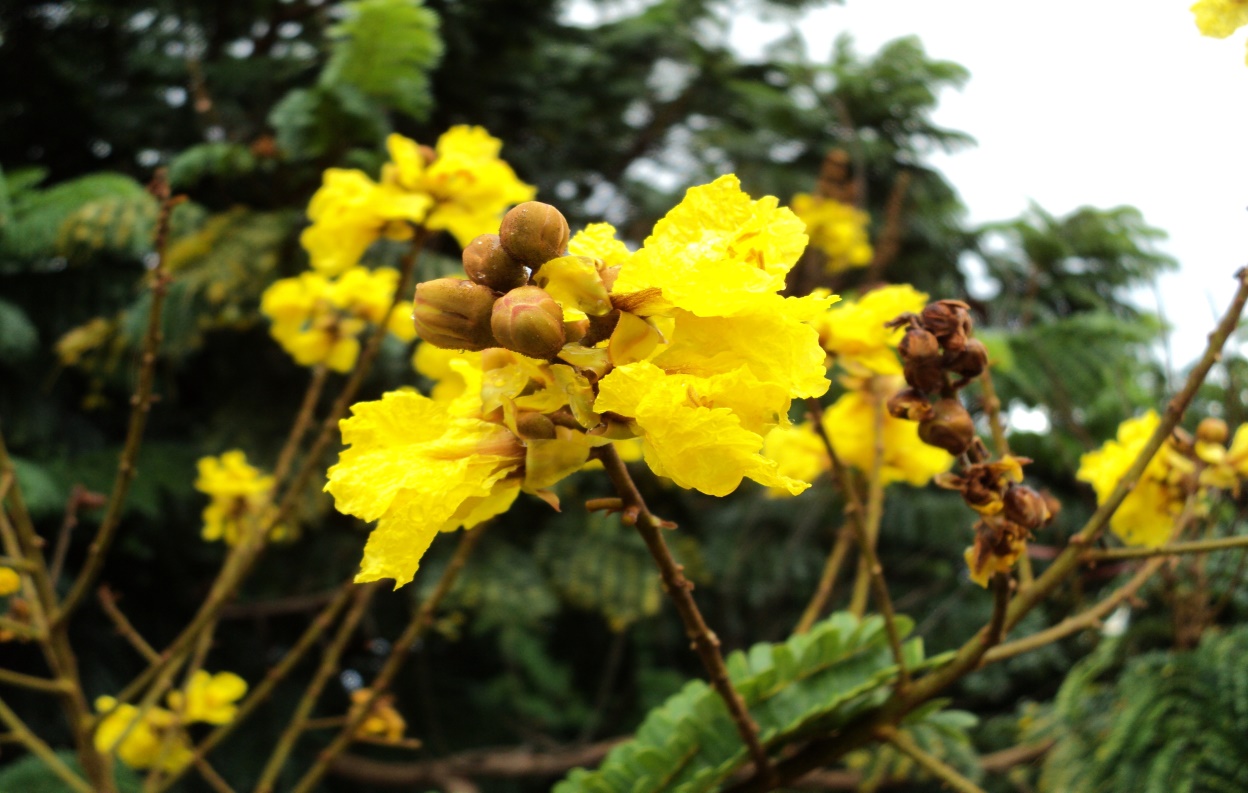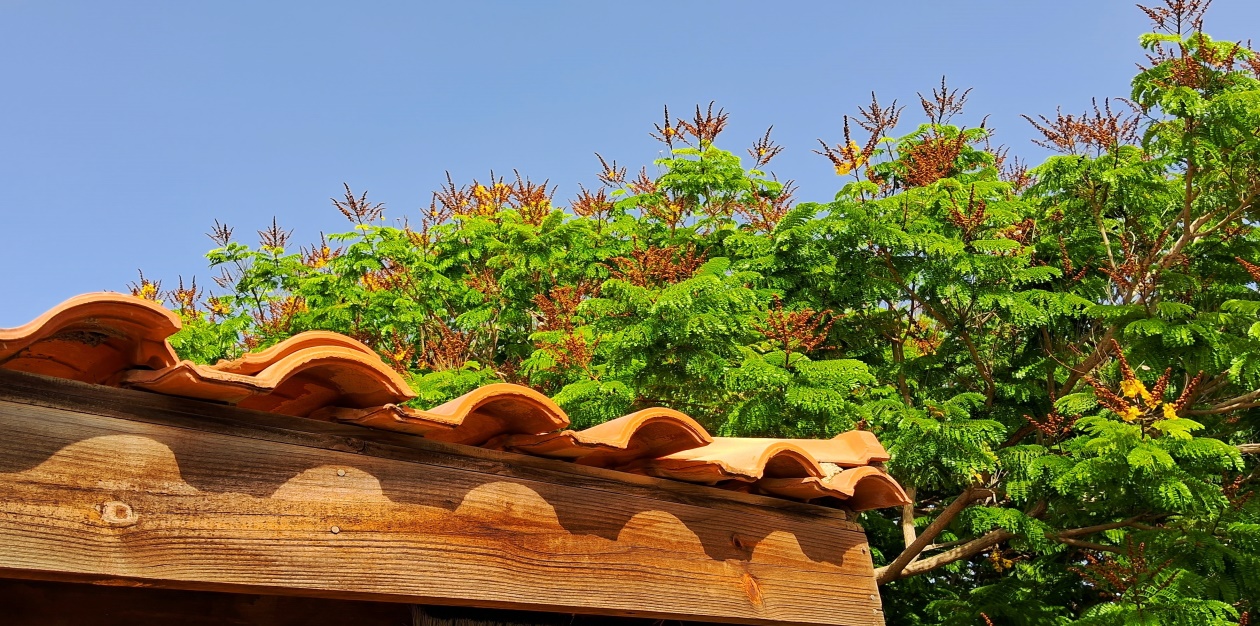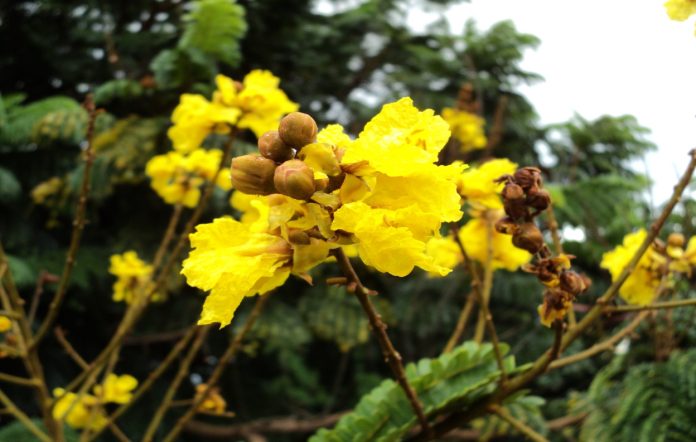Booking a magical glimpse inside Etnia Nativa
Article by Etnia Nativa call us 592 2702 and book your experience!
Did you know that Etnia Nativa, a unique living museum, is where island tradition meets entertainment, sharing interactive experiences with an exclusive few? An unparalleled private opportunity to enter a beautiful property made with reused materials collected during time by our unrivaled columnist and island cultural expert. Book your visit and dive deep into the navel of Aruba’s archaic cultural heritage through an educational perspective. In this new episode, we introduce details of an ornamental tree, locally known as Sapate’, whose origin goes back to Asia, brought here in colonial days by Dutch for its shade, beautiful flowers, and resistance to heat and drought.

Sapate’ (Peltophorum pterocarpum) is commonly known in English as copper pod, yellow flame tree, or yellow poinciana. It is grown in tropical regions as an ornamental tree and on street sidewalks and gardens around the world, particularly in India, Pakistan, Florida, and Hawaii.
It is a deciduous tree that reaches up to 50 meters in height with “bipinnate leaves” (a botanical term for leaves with secondary leaf branches) and a stalk of bright yellow flowers.

Its beautiful flowers are used as the main decoration of the Bathukamma flower festival celebrated in Telangana state. In India, this tree has been planted alternately as a common scheme for their avenues, alternating with Delonix Regia (Poinciana)- (see episode 52, Ornamental Trees)- to give a striking yellow and red effect.
Its wood covers a wide variety of uses, including cabinet making, while the foliage is used as a fodder crop. The brownish color called sogan, typical of batik fabrics from the interior of Java, is produced from P. pterocarpum bark, which is known there as soga and locally known there as kayu timor, also used in traditional medicine for the treatment of ailments like stomatitis, insomnia, skin troubles, constipation, ringworm, dysentery, muscular pains, and skin disorders. Belonging to the Fabaceae family, Sapate’, and is regarded as one of the most significant plant species in the traditional system of medicine.
‘Sapate’, with its spreading, rounded crown, stands at the center of the Etnia Nativa garden with about 4 meters tall but will grow much larger, reaching up to 15 meters in height. With proper pruning, it develops an increasingly uniform crown. The delicate, dark green, feathery leaflets provide a softening effect for the tree’s large size and create a welcoming dappled shade. From May to September, the entire crown of the tree is covered with a yellow blanket of flowers, which appear in showy terminal panicles and exude a delicious grape-like perfume. These clusters of flowers are followed by four-inch-long seed pods that mature to a dark, glossy wine color. At certain times of the year, a tree filled with bees and their constant buzzing becomes the most “talkative” tree in the garden. Especially during these days when it is invaded by hundreds of Cicadas that produce a loud buzzing or clicking sound, often described as a rhythmic, high-pitched whine, which males generate to attract females for mating, “delight” us with the most deafening concert.

Full bloom is a wonderful tree, fast-grower that does best in full sun and in any well-drained soil. However, temperatures around 20 degrees Celsius or lower cause the leaves to fall off, but these are quickly replaced. It is an ideal tree for open spaces or large yards. It can be grown with a single trunk or with several. The trunks or branches of multi-trunk trees should be well spaced along a central stem and should not grow more than half the diameter of the main stem. This will increase wind resistance. The single-trunk tree ensures a long-lasting plant.
Although the “Sapate,” or Yellow Poinciana, will develop a very large trunk, its shallow surface roots make it susceptible to being blown over during severe wind storms, so consideration should be given to locating it about ten feet away from buildings so that the large, shallow roots do not cause damage.
If you liked our native stories and are interested in learning the true identity of Aruba, a visit to Etnia Nativa would be a fantastic choice. It has been a trend setter since 1994, as a co-founder of projects such as Arikok National Park, the Archaeological Museum, and the Artisan Foundation, among others. Every week, this newspaper continues to share its valuable knowledge. Don’t miss the opportunity to feel the island’s spirit through learning real stories that are not just remembered; they resonate, they’re felt, and they stir souls. Book your visit: WhatsApp +297 592 2702 etnianativa03@gmail.com




















